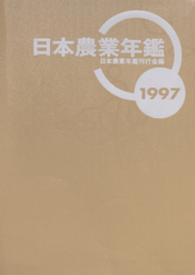Description
Are there better ways to address community challenges than expending funds on international service-learning?In attempting to wed learning and service, are we are exploiting the “other” for new, or recycled, aims?As these questions attest, of all types of service-learning, international service-learning (ISL) most starkly illuminates the tensions between the liberatory and oppressive potentials of practice.This book explores the ramifications of realizing a new age of service-learning that pushes beyond single episodic course-based projects to rebalance student learning and community outcome priorities, and provides insight into what it looks like in its execution. In describing eleven international programs designed to achieve reciprocal, sustained relationships in which learning is co-created, the contributors reveal their struggles to change the balance of power relationships and move to a more transformative practice. Common themes are the developmental nature of this work; the recognition that it takes multiple attempts, often over years, for an individual or an institution to get this work even nearly right; that resolving the challenges of unequal resources, power, and privilege can never be completely erased; and that attention has to be given to the micro-level details.What emerge are seven guiding principles that define the nature of partnerships in liberatory practice, and that apply to all forms of service learning. They must be: strategic--linked to the mission and expertise of the institution; long-term; multifaceted--allowing both partners to play a multiplicity of roles; developmental in building capacities; contextualized in historic and cultural understanding; fully reciprocal; and create the potential for community-driven change.In addressing the problematic nature of ISL, and of service-learning in general, this book interrogates whether its experiences create the necessary conditions for the formation of individual values, convictions, and action; and whether their pivotal teaching and learning moments are indeed replicable and transferable across individual, institutional and even cultural contexts. Its conclusions and insights will be of intense interest to administrators and practitioners alike.
Table of Contents
Introduction - Mathew Johnson 1. Power Relations, North and South. Negotiating Meaningful “Service” in the Context of Imperial History—Paula J. Mellom and Socorro Herrera 2. Decentering the United States in International Service-Learning. A Comparative Perspective—Amanda L. Espenschied-Reilly and Susan V. Iverson 3. Strategic International Service-Learning Partnership. Mitigating the Impact of Rapid Urban Development in Vietnam—Shpresa Halimi, Kevin Kecskes, Marcus Ingle, and Phung Thuy Phuong 4. Asset-Based Community Development and Integral Human Development. Two Theories Undergirding an International Service-Learning Program—Marisol Morales and Arturo Caballero Barrón 5. Partnership versus Patronage. A Case Study in International Service-Learning From a Community College Perspective—Lori Halverson-Wente and Mark Halverson-Wente 6. Building Student and Organizational Capacity. Assignments and Tools—Lori Gardinier 7. Institutional Networks and International Service-Learning at the Graduate Level—Stephanie Stokamer, Jennifer Hall, and Thomas Winston Morgan 8. When Service-Learning Meets Study Abroad. Locating International Service-Learning Institutionally and Abroad—Amye Day Ong and Patrick M. Green 9. Multidisciplinary Learning. Interdisciplinary Teaching and Community Service-Learning in Jamaica—A. Rafik Mohamed, John Loggins, and Carlton D. Floyd 10. Transforming Practice. International Service-Learning as Preparation for Entering Health Care—Joy Doll, Keli Mu, Lou Jensen, Julie Hoffman, and Caroline Goulet 11. International Service-Learning in Faith-Based Contexts—Paul Kollman, Rachel Tomas Morgan 12. A Critical Global Citizenship to Global Engagement—Eric Hartman and Richard Keily Conclusion. Does Tension in International Service-Learning Lead to Transformation?—Patrick M. Green Editors and Contributors Index








